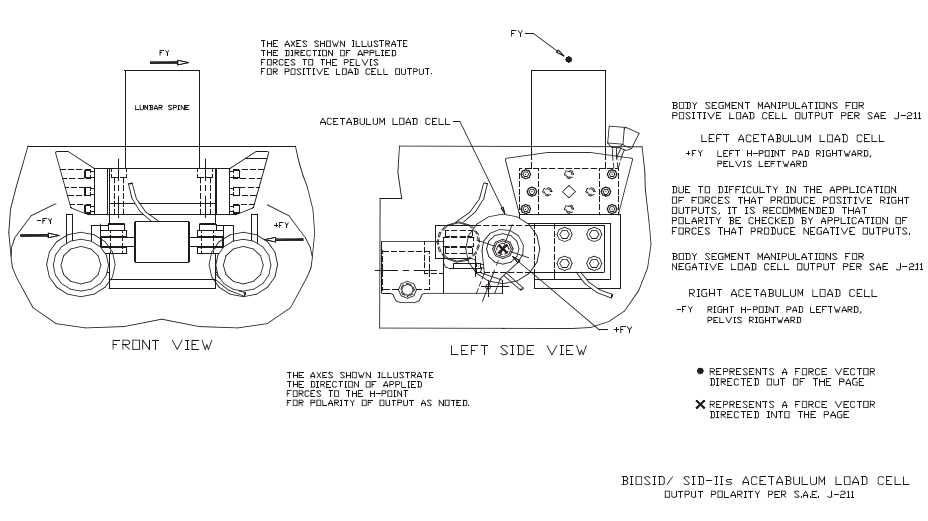Acetabulum Iliac
Overview
The acetabulum and iliac forces are measures of the SID-IIs and WorldSID test dummies that are compared injury assessment references values (IARV). These IARVs are determined for side impacts using Zhu et al. [1] and Bouquet et al. [2] that is outlined in the side impact guidelines [3].
Inputs
Signals:
- Pelvis Iliac Force (Y)
- Pelvis Acetabulum Force (Y)
Calculation
- Filter the acetabulum and iliac signals (CFC = 600)
- Find the maximum of each signal

Injury Criteria
Injury criteria from IIHS [3],
| Parameter | IARV | Good-Acceptable | Acceptable-Marginal | Marginal-Poor |
|---|---|---|---|---|
| Acetabulum force (kN) | 4.0 | 4.0 | 4.8 | 5.6 |
| Ilium force (kN) | 4.0 | 4.0 | 4.8 | 5.6 |
| Combined Acetabulum and Ilium force (kN) | 5.1 | 5.1 | 6.1 | 7.1 |
References
[1] Zhu, J. Y., J. M. Cavanaugh, and A. I. King. Pelvic biomechanical response and padding benefits in side impact based on a cadaveric test series. No. 933128. SAE Technical Paper, 1993.
[2] Bouquet, Robert, et al. "Pelvis human response to lateral impact." Proceedings of the 16th International Technical Conference on the Enhanced Safety of Vehicles, Windsor, ON, Canada. Vol. 31. 1998.
[3] "Side Impact Crashworthiness Evaluation 2.0 Rating Guidelines - Version III" No. 2022-12. Insurance Institute for Highway Safety (IIHS), 2022.
[4] "Sign Convention for Vehicle Crash Testing" No. J1733-2018-11 SAE International. SAE Technical Report, 2018.